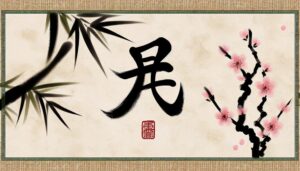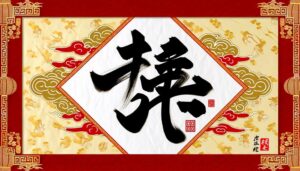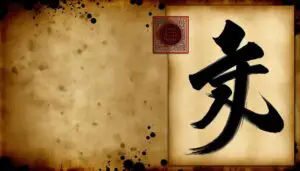How to Draw the Chinese Rabbit Zodiac Symbol
The Chinese symbol for the Rabbit Zodiac, denoted as 兔 (tù), is deeply embedded in Chinese culture and astrology. It is the fourth animal in the Chinese zodiac cycle, symbolizing compassion, sensitivity, and charm.
Historically, it dates back to the Han Dynasty, reflecting longevity and prosperity in classical literature and art. The Rabbit is intricately tied to the Moon and the Jade Rabbit in mythology, emphasizing values of peace and refinement that align with Confucian ideals.
For those interested in how these aspects manifest in calligraphy and modern interpretations, there is much more to explore regarding its cultural significance.
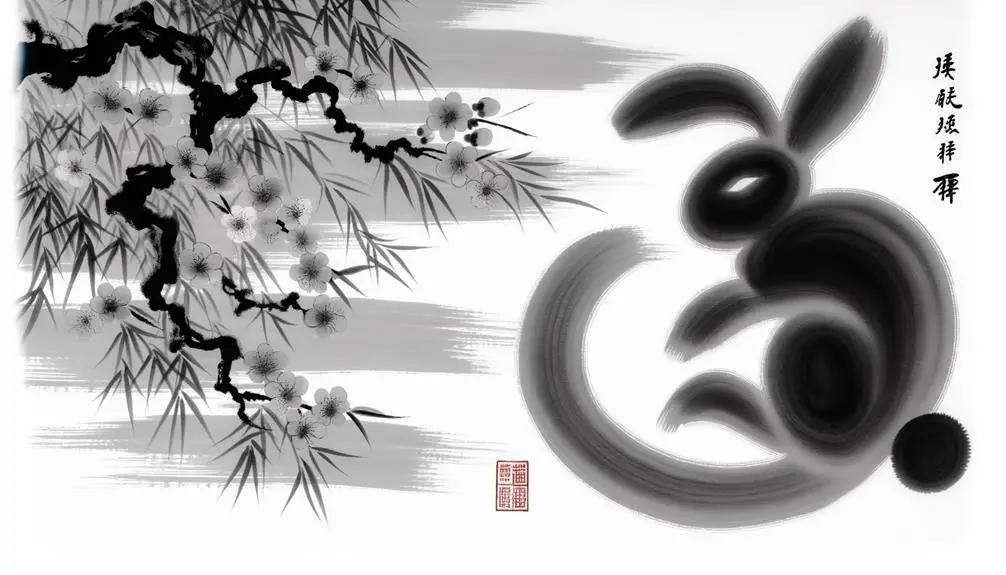
Key Takeaways
- The Chinese symbol for Rabbit is deeply rooted in the lunar calendar and ancient mythology.
- Rabbit is the fourth animal in the Chinese zodiac cycle and symbolizes compassion, sensitivity, and charm.
- The character for Rabbit can be written in various Chinese calligraphy styles such as Kaishu and Xingshu.
- Rabbit represents peace, longevity, and prosperity, often depicted in traditional Chinese art and modern design.
- People born under the Rabbit sign are seen as gentle, elegant, and articulate, aligning with Confucian ideals.
Historical Background
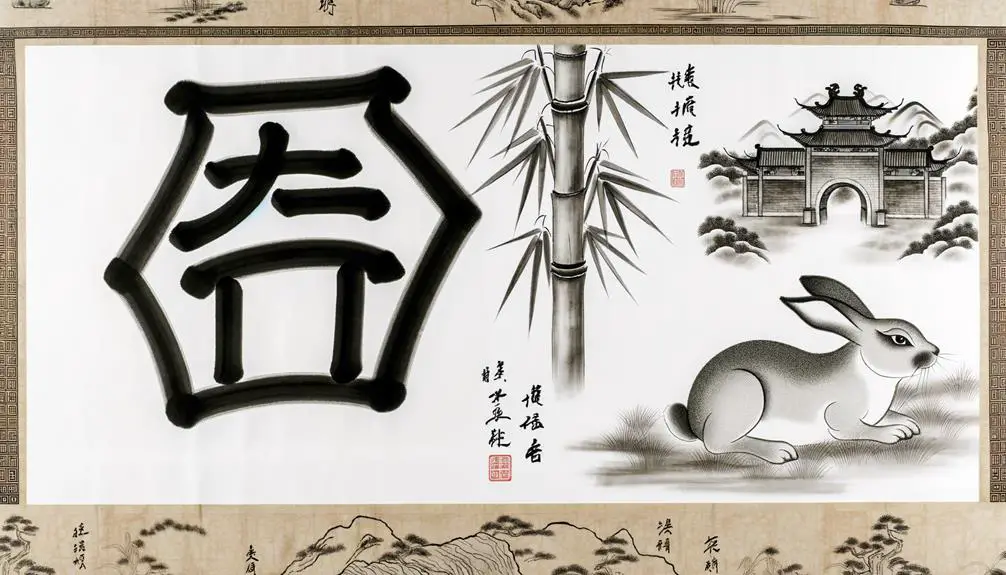
Historically, the Chinese symbol for the Rabbit, or 兔 (tù), has been deeply embedded in Chinese culture and astrology, symbolizing traits such as gentleness, elegance, and a strong sense of responsibility.
The Rabbit is the fourth animal in the Chinese zodiac cycle, which operates on a twelve-year rotation. This zodiac sign can be traced back to ancient Chinese mythology and the lunar calendar system.
Records from the Han Dynasty (206 BCE – 220 CE) illustrate the integration of the Rabbit into astrological practices and folk traditions. The sign's historical roots are further evidenced by its presence in classical literature and art, indicating a longstanding cultural and societal impact.
This historical embedding underscores the profundity of the Rabbit's symbolism in Chinese heritage.
Cultural Significance
The cultural significance of the Chinese symbol for the Rabbit, 兔 (tù), is deeply rooted in traditional beliefs and societal values, reflecting attributes such as compassion, sensitivity, and sophisticated charm. Within Chinese culture, the Rabbit is considered a symbol of peace, longevity, and prosperity.
People born under this sign are often perceived as gentle, elegant, and articulate, embodying a harmonious and refined demeanor. The Rabbit also holds an auspicious position in Chinese mythology, associated with the Moon and the Jade Rabbit, a celestial being believed to prepare the elixir of immortality.
This zodiac sign's traits align with Confucian ideals of moderation and propriety, further embedding 兔 (tù) in the cultural and philosophical fabric of Chinese society.
Calligraphy Techniques
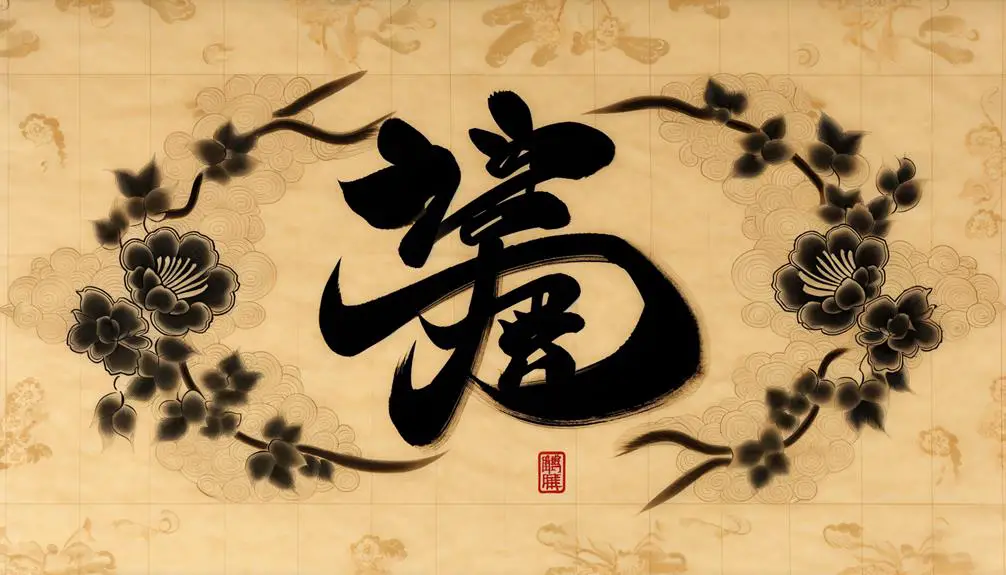
Exploring the calligraphy techniques used to render the Chinese symbol for the Rabbit, 兔 (tù), reveals a rich tradition of artistic expression that enhances the cultural significance of this zodiac sign.
Traditional Chinese calligraphy is characterized by its use of brush and ink, each stroke meticulously crafted to convey both meaning and emotion. The symbol 兔 (tù) can be written in various styles, including the formal and structured Kaishu (regular script) and the more fluid and expressive Xingshu (running script).
Each style demands mastery of brush pressure, stroke order, and rhythm, reflecting the calligrapher's skill and emotional state. These techniques not only preserve the linguistic integrity of the character but also imbue it with aesthetic and symbolic depth.
Zodiac Personality Traits
The Rabbit, as one of the twelve animals in the Chinese Zodiac, is often characterized by a gentle and compassionate nature, reflecting a deep sensitivity towards others.
This sign is also noted for its artistic and creative tendencies, frequently manifesting in pursuits that require a refined aesthetic sense.
Understanding these traits not only provides insight into the cultural significance of the Rabbit symbol but also enhances our appreciation of the nuanced personality attributes associated with this zodiac sign.
Gentle and Compassionate Nature
Individuals born under the Rabbit zodiac in Chinese astrology are often characterized by their gentle demeanor and compassionate nature, reflecting a deep cultural appreciation for harmony and sensitivity. Rooted in Confucian ideals, these individuals prioritize peace and exhibit a refined sense of empathy.
Their ability to navigate social dynamics with grace and tact is emblematic of a society that values collective harmony over individual assertiveness. The Rabbit's gentle nature is not merely a personality trait but a culturally reinforced behavior, emphasizing the importance of interpersonal relationships and emotional intelligence.
This inherent compassion allows them to foster strong, supportive networks, making them highly respected within their communities. Their demeanor is a reflection of the enduring influence of traditional Chinese virtues.
Artistic and Creative Tendencies
Often celebrated for their artistic and creative inclinations, those born under the Rabbit zodiac in Chinese astrology demonstrate a profound connection to cultural aesthetics and innovative expression. Their artistic prowess often flourishes in environments that encourage introspection and tranquility, allowing them to produce works that resonate deeply with both traditional and contemporary audiences.
Key traits manifesting their creativity include:
- Aesthetic Sensibility: Rabbits have an innate ability to appreciate and create beauty, often excelling in visual and performing arts.
- Innovative Thinking: Their capacity for originality allows them to devise unique solutions and artistic concepts.
- Cultural Appreciation: Deeply rooted in cultural traditions, they often draw inspiration from historical and philosophical sources, enhancing their artistic endeavors.
Understanding these traits provides valuable insight into the Rabbit's creative essence.
Symbol in Art
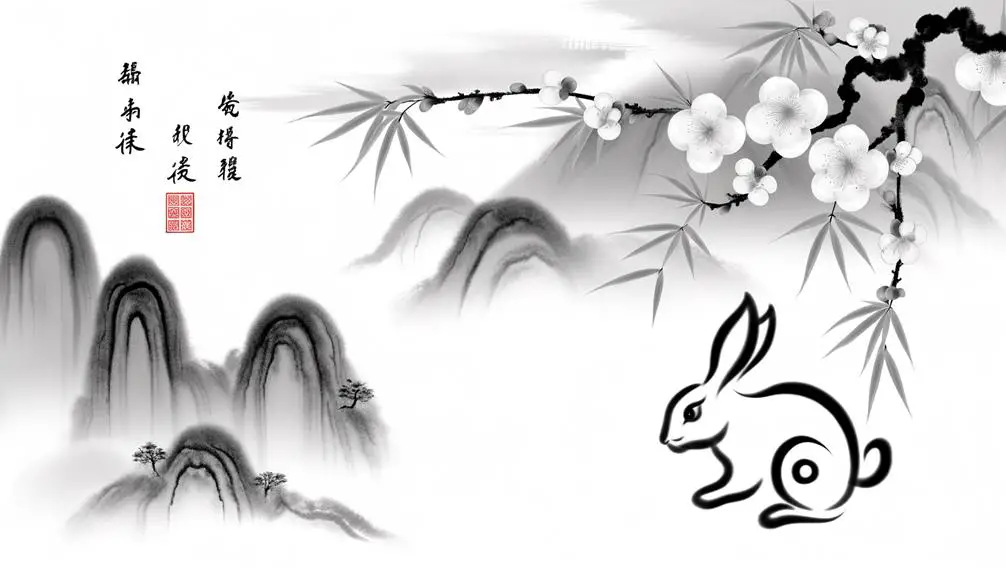
The Chinese symbol for the Rabbit Zodiac holds a prominent place in traditional Chinese paintings. It is often depicted with intricate brushwork that emphasizes its cultural significance and aesthetic value.
In modern graphic design, this symbol has been adapted to resonate with contemporary audiences. It blends classical elements with innovative techniques to create a dual representation that highlights the enduring influence of the Rabbit Zodiac in both historical and modern artistic expressions.
Traditional Chinese Paintings
In traditional Chinese paintings, the rabbit zodiac symbol frequently appears as a motif that embodies qualities such as longevity, peace, and prosperity, reflecting its deep-rooted significance in Chinese culture and art. These paintings often portray the rabbit in various forms, each imbued with rich symbolism and artistic finesse. The rabbit is often depicted within natural settings, accentuating its harmonious relationship with the environment.
- Longevity: Rabbits are often shown alongside elements like pine trees or cranes, which are traditional symbols of long life.
- Peace: The gentle and serene demeanor of the rabbit embodies tranquility and calmness.
- Prosperity: Rabbits are sometimes illustrated with peaches or coins, symbols of wealth and abundance.
This iconography underscores the rabbit's esteemed place in Chinese artistic traditions.
Modern Graphic Design
Contemporary graphic design has embraced the rabbit zodiac symbol, reinterpreting its traditional connotations of longevity, peace, and prosperity through modern aesthetics and digital mediums.
This reinterpretation often involves a synthesis of minimalist design principles and vibrant color palettes, creating visually compelling representations that resonate with both cultural insiders and outsiders.
Digital tools enable designers to experiment with form and texture, allowing the rabbit symbol to be integrated into a myriad of contexts, from corporate branding to social media content.
The adaptability of the rabbit symbol in modern graphic design underscores its enduring relevance, bridging traditional Chinese cultural values with contemporary global visual language.
This fusion enhances cultural appreciation and facilitates cross-cultural dialogue through visually engaging mediums.
Modern Interpretations
Modern interpretations of the Chinese symbol for the Rabbit Zodiac reflect a blend of traditional beliefs and contemporary cultural influences. This evolution manifests in various forms, as the Rabbit symbolizes luck, elegance, and inner peace.
Today, the symbol is often used in:
- Fashion: Designers incorporate Rabbit motifs in seasonal collections, emphasizing themes of grace and refinement.
- Technology: Digital avatars and emojis featuring the Rabbit symbol are popular in social media, representing calm and subtlety.
- Literature: Modern authors use the Rabbit Zodiac to characterize individuals with qualities of diplomatic skill and sensitivity.
These interpretations highlight the enduring relevance of the Rabbit Zodiac while adapting its significance to suit modern sensibilities and cultural landscapes.
Conclusion
The Chinese symbol for the rabbit zodiac encapsulates a rich tapestry of historical significance, cultural depth, and artistic expression. Through calligraphy, the symbol transcends mere representation, embodying the gentle and compassionate traits attributed to the rabbit.
Its presence in art and modern interpretations underscores an enduring legacy that continues to evolve. The rabbit zodiac symbol remains a profound emblem of cultural heritage and artistic ingenuity, woven seamlessly into the fabric of Chinese tradition.

